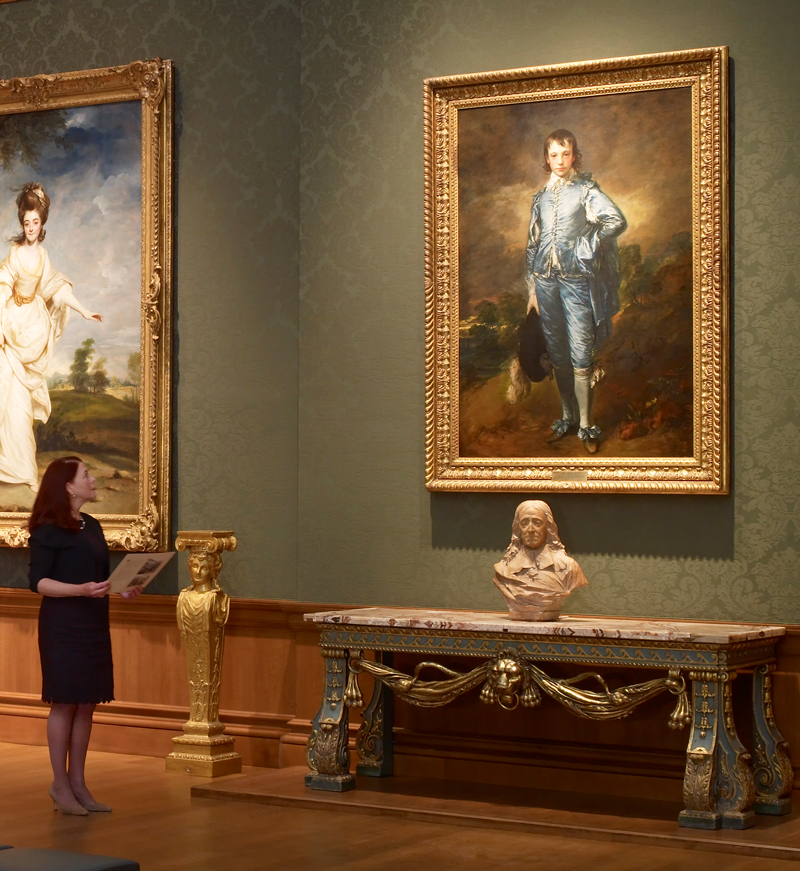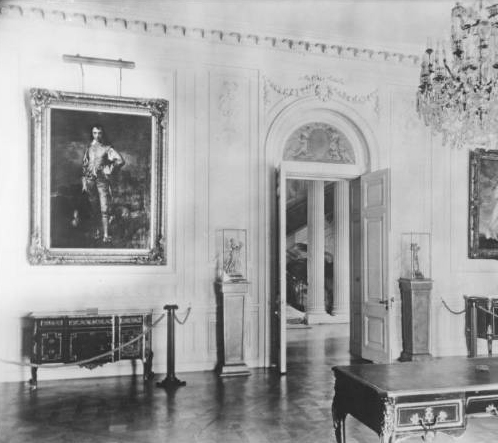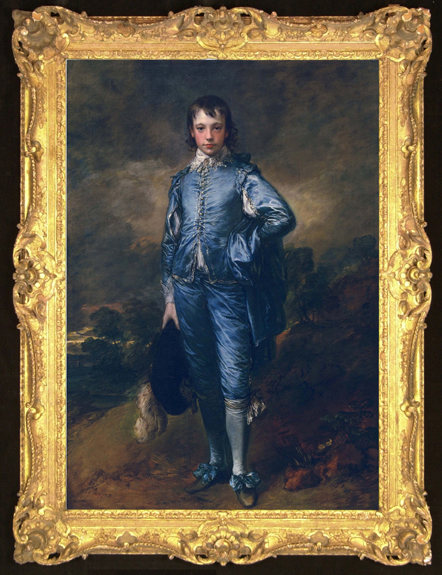The Huntington’s blog takes you behind the scenes for a scholarly view of the collections.
How Do You Frame a Masterpiece?
Posted on Thu., Oct. 24, 2013 by

The Blue Boy in its current frame, which will be replaced in the coming month.
In 1921, Henry and Arabella Huntington purchased what would become the most famous work of art in their collection: The Blue Boy (1770) by Thomas Gainsborough. Its celebrity rests on many factors, not least of which is the superb quality of the painting, with its brilliant brushwork and the frank earnestness of the boy’s gaze. Its price—at roughly $725,000—was the highest ever paid for a work of art up to that time. The scandal provoked by its departure from Britain also increased its notoriety. The fact that it was exhibited at the National Gallery, London, after the art dealer Joseph Duveen sold it to the Huntingtons further expanded its fame.
So The Blue Boy is a big deal. But what’s the story behind the famous painting’s frame?

The painting as it appeared in the Huntington Art Gallery in the 1920s and early 1930s in a frame that was replaced in 1938.
When the painting arrived in San Marino, The Blue Boy’s frame was likely the same one in which it was displayed by the previous owner, Hugh Grosvenor, 2nd Duke of Westminster. By 1938, the Huntington’s curator of art collections, Maurice Block, was ready to respond to complaints about the painting’s “bulky 19th-century frame.” According to a memo written on May 6 of that year, “We have cut down one of our old frames to put the Blue Boy into it.”
The replacement frame appears to have been an extra supplied by Duveen and probably had been in storage for some time in the Huntington Art Gallery basement. This frame is of the so-called Carlo Maratta type, widely used in England from 1750 through the turn of the 20th century. In fact, several Duveen-supplied Maratta frames can be seen on paintings in The Huntington's Thornton Portrait Gallery, including George Romney’s portraits of Lady Beauchamp-Proctor, Jeremiah Milles, and Rose (Gardiner) Milles; and Gainsborough’s portrait of Elizabeth Beaufoy, later Elizabeth Pycroft. (Other frame patterns in the portrait gallery include the very finely carved Louis XV style frame around Pinkie and a French Regence style frame around Diana, Viscountess Crosbieby Reynolds.)

This digital rendering shows the new frame as it will appear on The Blue Boy after installation in late November.
The Huntington recently began exploring ways to reframe The Blue Boy. We first approached Michael Gregory, frame specialist at Arnold Wiggins & Sons in London, a workshop specializing in the adaption and reproduction of antique frames. It supplies frames to the Royal Household and London’s National Portrait Gallery.
Noting that the frame around The Blue Boy appeared a bit heavy on the picture, Mr. Gregory suggested several 18th-century English frames as possible replacements. Working with Kevin Salatino, the Hannah and Russel Kully Director of the Art Collections at The Huntington, I helped select a splendid Rococo example that complements the framing of Thomas Lawrence’s Pinkie.
Plans are now underway to reframe The Blue Boy by the end of November. The reframing is made possible by a gift from longtime Huntington donors Jim and Joan Caillouette.
RELATED CONTENT: Click here to view the latest installment in Verso's Videre series, "Frame," a set of three videos about reframing.
Catherine Hess is the chief curator of European art at The Huntington.